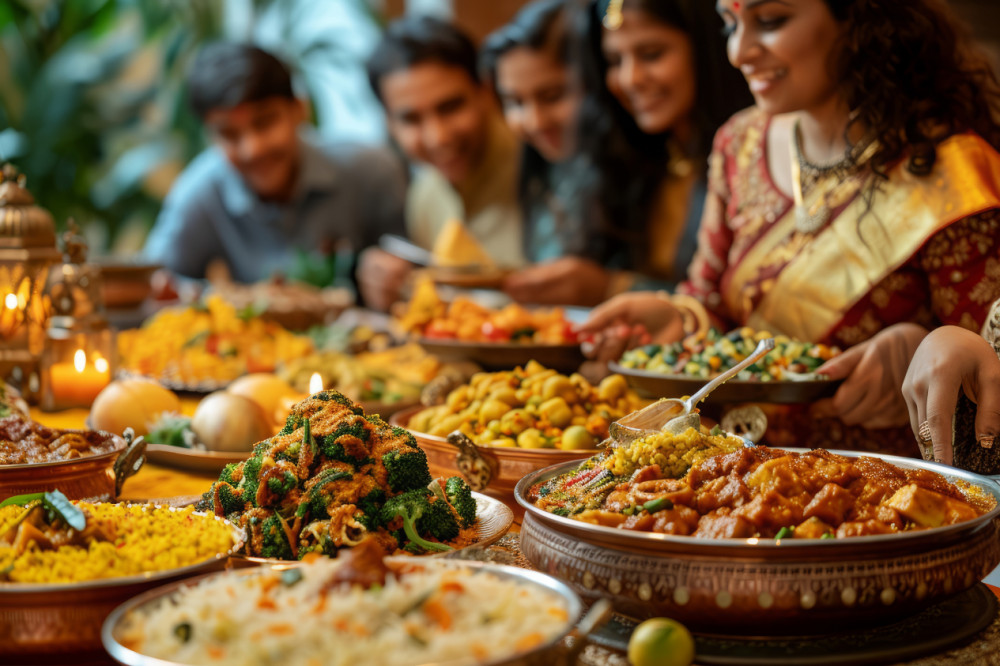
9 Winter Must-haves
9 Winter Must-haves
Don’t miss out on keeping your body warm as the temperature dips
Post the festive season there’s a chill in the air in the evenings and mornings and one does feel like snuggling in the blanket for a tad longer than always, doesn’t one? The reason for this is winter fatigue – the cold restrains us from stepping out of our warm houses thereby depriving ourselves from natural sunlight which helps keeps us energetic through the day. The human body equates darkness with sleep so lesser light and being bundled up in woollies ends up making us lethargic.
It is here that our traditional Indian foods come into the fore as they play a pivotal role in keeping the body naturally warm, active, and energetic, thereby enabling us to bid adieu to winter fatigue!
Foodism brings you a list of winter must-haves for your kitchen along with a peep into their history and benefits
Chillies
Chilli peppers are purported to be a part of the human diet since 7500 BC with Christopher Columbus being the first European to encounter them. He gets the credit for naming them “peppers” because their taste was reminiscent of black pepper.
The capsaicin in chillies fastens the body metabolism keeping the body warm; besides boosting digestion and blood circulation
Usage – As an ingredient of Indian dal, curries, vegetables, snacks and chutneys
Clarified Butter (Ghee)
Clarified Butter or ghee as it is indigenously known as, apparently originated in India by fluke. Basically heat was not conducive to storing butter for long periods; but once the butter was clarified i.e. heated until the water evaporated and the milk solids separated away then the product had a long shelf life. Since thousands of years, ghee has featured in Indian recipes, and even in Hindu mythology, which attributes its origins to the divine. According to a popular story - Prajapati, Lord of the Creatures, rubbed his hands together to create the first ghee, which he then poured into the flames to create his offspring. Perhaps that’s why even today a common ritual auspiciously adhered to by Hindus is pouring ghee into sacred fires during marriages, funerals and other pujas and ceremonies.
Today ghee features right on the top of the super-food list not only in India but even in the West! Owing to its fat content a single teaspoon of ghee consumed daily suffices to keep you warm from inside. Opt for ghee prepared from cow’s milk as it has less fat content besides packing in a powerhouse of benefits!
Usage – Daily diet (chapattis, khichdi et al) and deserts
Dried Fruits and Nuts
Conventional dried natural products, for instance - raisins, figs, dates, apricots and apples - have been a staple of Mediterranean eating regimes for centuries. The drying out happened organically: grapes, dates and figs that tumbled from the tree or vine would dry in the hot sun; the gatherers noted that these fallen products took on an eatable structure besides having a long shelf life.
Dry fruits are replete with vitamins, minerals and essential oils that facilitate a supple and nourished skin in winter. Almonds specifically are renowned for producing heat in the body, besides boosting digestion and memory; while peanuts kick start the metabolism and are good at combatting cold and flu; cashews on the other hand up good cholesterol and energy levels; dry figs improve bone density; raisins prevent anaemia; apricots relieve muscle spasms and cramps; while pistachios help keep blood level, blood sugar and cholesterol in check; and walnuts lower bad cholesterol
Usage – In deserts or even as munchies
Ginger
A cousin of turmeric and cardamom, ginger – a culinary and medicinal herbaceous plant root - is indigenous to China; it is from here that it spread to other parts of Asia, the Spice Islands, and West Africa. Albeit, it is India which is the largest producer of ginger today!
Ginger is blessed with multiple properties it – induces body heat; boosts the immune and digestive system; and increases the blood circulation.
Usage – In tea; in food items like vegetables, soups, hot beverages; as part of various chutneys
Holy Basil (Tulsi)
Basil, a member of the mint family, originated in Persia and India; where it has now been cultivated for more than 5000 years. Surrounded by rich folklore, renowned for uses both culinary and medicinal and named for the Greek word meaning ‘king’, basil is indeed considered by many to be the ‘King of Herbs’.
Practically every second Indian household cultivates this sacred herb in their backyard as it helps the body fight cold, flu and respiratory orders when the temperature dips; besides keeping the body warm by boosting metabolism and flushing out toxins.
Usage – In hot beverages, salads et al
Honey
Honey dates back to 2100 BC where it was mentioned in Sumerian and Babylonian cuneiform writings, the Hittite code, and the sacred writings of India and Egypt. It owes its name to the English ‘hunig’ and dons the mantle of being the first and most popular sweetener used by mankind. Allegedly in the eleventh century AD, German peasants paid their feudal lords in honey and beeswax. In the bygone era, honey was used - in food and beverages; to prepare cement; in furniture polishes and varnishes; for medicinal purposes; and also as a form of currency in the barter system.
Being warm in nature this is the best substitute for addictive sugar during winter as it keeps cold, cough and flu at bay
Usage – As a replacement for sugar in deserts and beverages
Jaggery
Jaggery is basically sugar in block form prepared from the juice of sugarcane and sometimes from the sap of the date palm tree. It is consumed in Africa, parts of the Americas, and Asia. Widely used in India, some sources claim that jaggery was brought to India by the Portuguese; but it is more likely that it originated in the subcontinent. Ayurvedic medicine practitioners claim that they have been using it in their concoctions for 3000 years. However a point to be noted is that the term ‘jaggery’ has its origins in the Portuguese word ‘jagara’.
Jaggery helps dilate blood vessels which in turn produces heat in the body
Usage – As a replacement for sugar in deserts; in the Gujarati dal and curry; and simply as a snack with roasted grams
Sesame Seeds (Til)
Indigenous to the Sunda Islands in Indonesia this oldest-known oilseed plant has been cultivated for over 4000 years. From Indonesia, sesame seeds made their way to China, Egypt, India, and Japan. Evidence suggests that oil extraction from sesame seed dates back to 900-700 BC in eastern Turkey, and that it’s been used in China for at least 2000 years.
Apparently sesame seeds were used in the bygone era during the cleansing rituals as a symbol of immortality in funeral ceremonies; while during wars, sesame seeds were provided to soldiers for enhancing their strength.
Rich in calcium and iron sesame seeds help maintain body temperature
Usage – In chikkis, sweet balls, gajaks, deserts et al
Winter Spices – Cinnamon, Pepper and Turmeric
As far back as 2000 BC, cinnamon was a valuable commodity in the Middle East. One of its multiple uses in the ancient world was as a perfume for embalming purposes. Along with being a status symbol owing to its humongous cost, cinnamon was also popular because of its ability to preserve meat in the winter. Cinnamon helps retain and increase body temperature during the winter chill
Native to Southern India, today pepper is grown throughout the tropics. Archaeological evidence of people using pepper goes back to at least 2000 BC in India. The body produces heat organically when it digests pepper
A member of the ginger family, turmeric is native to southwest India and grows wild in the forests of south and Southeast Asia. No small wonder that India is the top producer of turmeric. Besides its medicinal and culinary uses, this spice was first used as a dye. The curcumin in turmeric lends it immunity boosting properties
Usage – As ingredients of soups, vegetables, dals, curries, salads, biryani, beverages et al
So hope this gets you started with some must-haves which you need to stock up in your pantry for winter.
Related Blogs

National Nutrition Week 2025 : Incorporating Nutritious Indian Superfoods
39 Views

More Herbs, Less Salt Day: Indian Herb-Infused Recipes for Wellness
69 Views

Fermented Indian Foods That Heal After Heavy Eating
81 Views

Reimagined: Creative Ways to Reuse Sweets & Savories
71 Views

Rituals on a Plate: The History of Food Offerings in Indian Festivals
101 Views